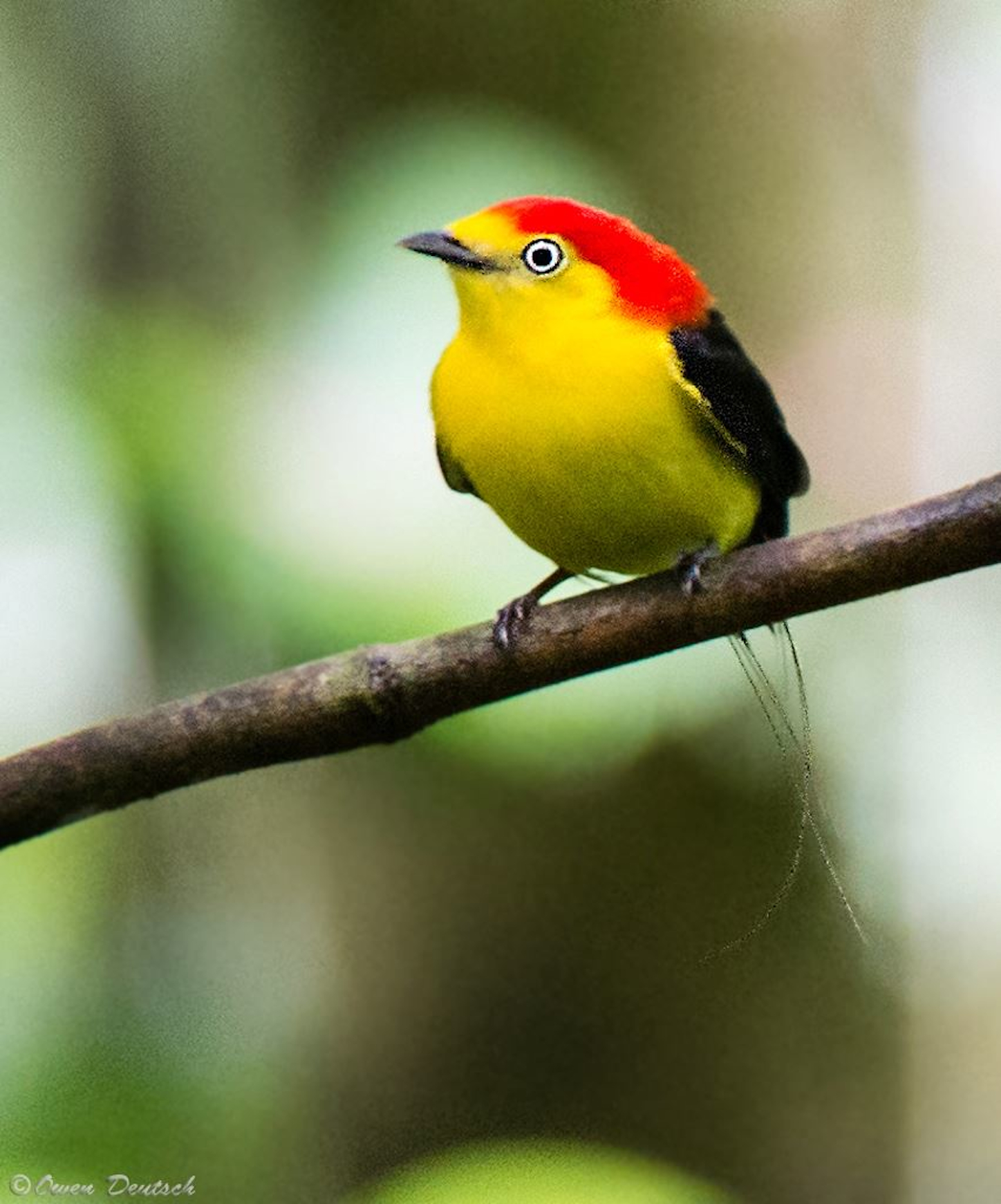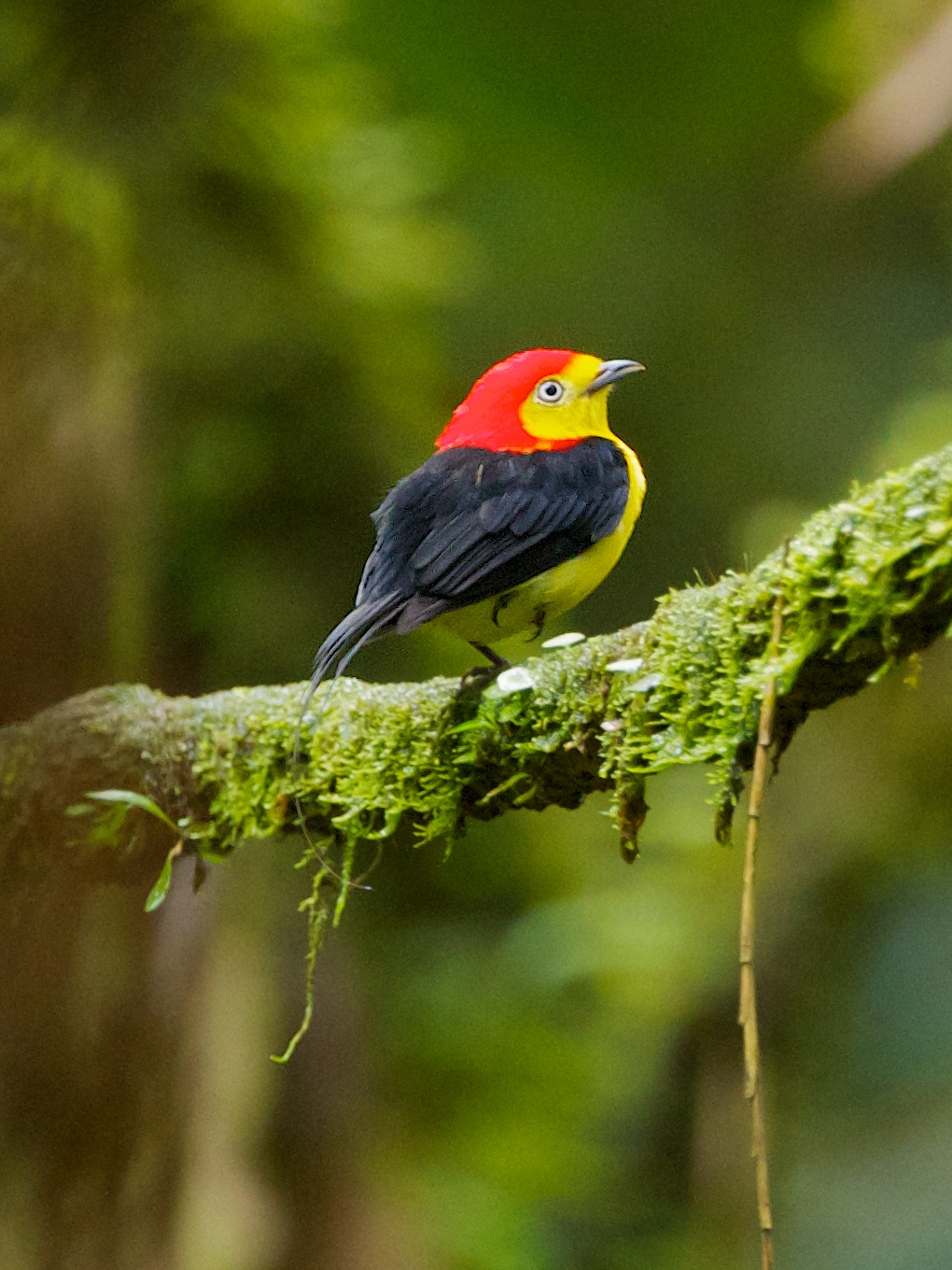
Pipra filicauda
SUBFAMILY
Piprinae
TAXONOMY
Pipra filicauda Spix, 1825, Brazil.
OTHER COMMON NAMES
French: Manakin filifиre; German: Fadenpipra; Spanish:
Saltarнn Cola De Hilo.
PHYSICAL CHARACTERISTICS
Sexes differ. Length is 4.2 in (10.7 cm). The gaudy males are
black above, with scarlet red crown, nape, and upper back, and
intense golden yellow undersides, forehead and sides of head.
Both sexes have tail feather shafts that project like long (2 in/5
cm) wire filaments; slightly shorter in the female. Irises are
milk white in both sexes.
DISTRIBUTION
Venezuela, Colombia, Ecuador, Peru, Amazonian Brazil.
HABITAT
Near streams in secondary forest, gallery and seasonally
flooded forest.
BEHAVIOR
Males form widely scattered leks in forest 3.3–26 ft (1–8 m)
above the forest floor. The courtship displays include swooping
and slow butterfly-like short flights, lateral side-jumps, side-toside
twisting with head lowered, crouching and erecting their
body feathers, and raising the tail. The wings make mechanical
sounds. When a female approaches closely, the male brushes
his raised tail filaments against her face and throat. According
to Ridgely and Tudor, “This is believed to be the only instance
among birds in which modified tail feathers are used primarily
in a tactile, as opposed to a visual, manner.”
FEEDING ECOLOGY AND DIET
Small fruits and insects are taken during quick, sallying flights.
REPRODUCTIVE BIOLOGY
Following copulation, the female alone builds a cup nest in
small trees besides streams to lay and incubate eggs and raise
the young.
CONSERVATION STATUS
Not threatened. Locally common in preferred habitats.
SIGNIFICANCE TO HUMANS
Eco-tourists and birdwatchers enjoy seeing the males.
Photo Gallery of - Wire-tailed manakin




 Animalia Life
Animalia Life